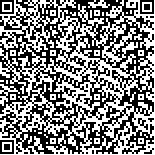| 本文已被:浏览 3802次 下载 2026次 |

码上扫一扫! |
|
|
| 黄斑篮子鱼(Siganus oramin)对北方养殖网箱网衣附着藻类的生物清除作用 |
|
吕旭宁1,2, 蒋增杰2,3, 方建光2,3, 邹 健2, 房景辉2, 高振锟1,2, 姜娓娓1, 郭晓亮1,2
|
|
1.上海海洋大学水产与生命学院 上海 201306;2.农业部海洋渔业可持续发展重点实验室 中国水产科学研究院黄海水产研究所 青岛 266071;3.青岛海洋科学与技术国家实验室 海洋渔业科学与食物产出过程功能实验室 青岛 266071
|
|
| 摘要: |
| 高温季节网衣附着藻类的大量附着是北方网箱养殖产业面临的主要问题之一,生物清除策略是解决这一问题的有效手段。本研究利用黄斑篮子鱼(Siganus oramin)作为网衣附着藻类生物清除的工具种,于2015年6–11月,采用室内实验和现场观测相结合的方法,系统研究了桑沟湾楮岛海域网箱养殖区不同水层网衣附着藻类生物量的月际变化、黄斑篮子鱼对优势藻类的摄食能力及对网衣藻类的清除效果。结果显示,同一月份不同深度附着藻类生物量的日均增长量有一定差异,且不同水层在8月7日–9月14日时间段内的藻类附着日均增长量均显著高于其他月份(P<0.01),各个月份海头红(Plocamium telfairiae)均为该区域的优势种类。构建了适温条件下黄斑篮子鱼对海头红的碳收支方程:100摄入碳=11.69生长碳+10.82粪便碳+6.06排泄碳+71.43代谢碳。初始体重为(1.44±0.61) g的黄斑篮子鱼经过152 d的养殖,平均体重达到(45.38±4.22) g,日均增重0.26 g。海区网箱内有无黄斑篮子鱼的对比实验显示,其对不同月份网衣附着藻类的清除率在80.28%–90.15%之间。研究表明,黄斑篮子鱼对网衣附着藻类有较高的清除效率,可以作为清除网衣附着生物的工具种。 |
| 关键词: 网衣 附着藻类 海头红 黄斑篮子鱼 碳收支 |
| DOI:10.11758/yykxjz.20160407002 |
| 分类号: |
| 基金项目: |
|
| Biological Control of Macroalgae Fouled on the Net of Marine Cage Using Siganus oramin in Northern China |
|
LÜ Xuning1,2, JIANG Zengjie2,3, FANG Jianguang2,3, ZOU Jian2, FANG Jinghui2, GAO Zhenkun1,2, JIANG Weiwei1, GUO Xiaoliang1,2
|
|
1.College of Fishers and Life Science, Shanghai Ocean University, Shanghai 201306;2.Key Laboratory of Sustainable Development of Marine Fisheries, Ministry of Agriculture, Yellow Sea Fisheries Research Institute, Chinese Academy of Fishery Sciences, Qingdao 266071;3.Laboratory for Marine Fisheries Science and Food Production Processes, Qingdao
|
| Abstract: |
| Accumulation of macroalgae fouled on the net of marine cage during hot seasons is one of the major problems of the cage culture in Northern China. Biological clearance is an effective way to solve this problem. In this study, Siganus oramin was used as the potential “cleaner” fish to control the fouling macroalgae. From June to November in 2015, a series of laboratory experiments and field observations were carried out in the cage culture area around Chudao in the Sanggou Bay. We investigated the monthly variation of the biomass and diversity of fouling macroalgae in different layers, the feeding activity of S. oramin on the dominant specie of fouling macroalgae, and the cleaning effect of S. oramin on the fouling macroalgae. The results showed that in the same month, the growth rates of fouling macroalgae varied according to their layers; from 7th August to 14th September, the growth rate of fouling macroalgae was significantly higher than in other months in different layers (P<0.01). Plocamium telfairiae was the dominant species in this area. A carbon budget equation for the S. oramin feeding on Plocamium telfairiae (100C=11.69G+10.82F+6.06U+71.43R) was constructed under the appropriate seawater temperature. The initial average wet weight of S. oramin was (1.44±0.61) g and it reached (45.38±4.22) g after a 152-day cultural period; the growth rate was 0.26 g/d. The removal rate for fouling macroalgae varied between 80.28% and 90.15% in the cage culture area. These results suggested that the removal of fouling macroalgae was more efficient using this method and thus it could be used to control the fouling macroalgae on the net of marine cages. |
| Key words: Net Fouling macroalgae Plocamium telfairiae Siganus oramin Carbon budget |